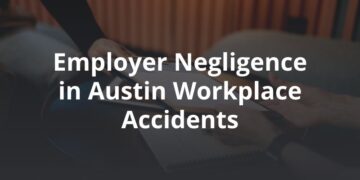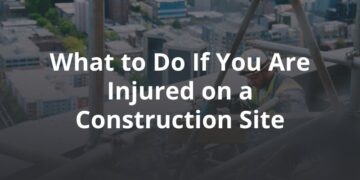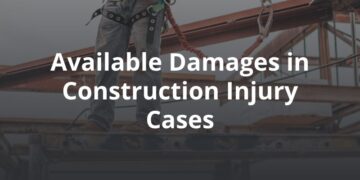Whether you click on the radio, scroll through Twitter, or turn on the TV, hardly a day goes by without news of a traffic accident on Austin roads. In a city of a million people, where more than 90% of households have cars, it’s no surprise that Austin’s roadways — characterized as trying to fit “50 pounds of potatoes in a 10-pack sack” by Ashby Johnson, executive director of the Capital Area Metropolitan Planning Organization (CAMPO) — can be dangerous.
From Austin residents’ morning rush-hour commutes to their nighttime jaunts across town, our roads simply weren’t built to handle the boom we’ve experienced over recent years. Austin is the site of over 697 Texas Department of Transportation (TxDOT) projects totaling over $11 million, and organizations like CAMPO, the Austin Transportation Department, and others are all working to make Austin streets a safer place. Until then, a portrait of Austin’s most dangerous roads might just help you feel more comfortable making informed decisions about being on — or off — the roadways.
What makes a road dangerous for cars?
First of all, having a lot of cars makes auto accidents pretty common in Austin. In addition:
- Most people in Austin drive alone to work
- The average commute time is 22 minutes
- The average car ownership is 2 cars per household.
Like other cities in Texas, Austin is car-dependent. While more people working remotely may reduce the total number of cars on the road, Austin’s population continues to increase, as do highly desirable neighborhoods outside the city center, increasing the need for commuting for both work and fun.
Other factors that contribute to increased danger on a road are:
- Uneven surfaces, such as those caused by heavy vehicles creating wheel ruts in the road
- Poor road design, like sharp turns, drop-offs, and blind curves
- Unsafe construction areas, which run the risk of increasing with the amount of overall construction being done in a city
- Potholes, which can seem never ending in Austin and other large cities
- Missing or confusing road signage, such as when construction needs re-route traffic or shift lanes in a way that contradicts the existing sign
- Lack of speed management, such as speed humps and reduced speed limits
Regardless of where the road is in Austin, speeding accounted for 24% of traffic crashes that resulted in death in Austin between 2013 and 2017. In cities like Austin, where the same areas are often trafficked by motor vehicles, cyclists, and pedestrians at the same time, speeding is always a recipe for disaster on the roadways.
What Are the Most Dangerous Intersections in Austin?
According to data compiled between 2012 and 2015, Austin has four of the most dangerous intersections for pedestrians in the state, with 171 crashes resulting in 171 injuries and five fatalities, including:
- Trinity and East 7th: Coming in as the most dangerous intersection for pedestrians in the state, with 40 crashes resulting in 42 injuries — none were fatal.
- West 4th and Lavaca: No deaths occurred during the reporting time frame, but still there were 31 crashes with 34 total injuries.
- I-35 at Rundberg: Not the last time you’ll hear about I-35, this intersection is reported to have seen 16 total crashes with seven incapacitating injuries and 21 total injuries.
The city has identified its priority intersections for all kinds of traffic collisions, and it might be worth an extra look or two next time you find yourself crossing, whether you’re on wheels or by foot.
A five-year study also found that Austin is home to two of the country’s most dangerous highways. Hwy 290 comes in at the 9th deadliest highway in the U.S., while I-35 is the 17th most deadly overall. In part, this is because, as far as highways go, they do their jobs. Even though both roads see congestion, they are constructed in a way that allows lots of cars to travel at high rates of speed.
Here are the most dangerous roads for Austin commuter vehicles, according to the 2018 TomTom traffic index:
- I-35: 2,625 accidents and 13 deaths
- US 183: 1,161 accidents and 6 deaths
- MoPac: 815 accidents and 3 deaths
Here are the most dangerous roads for Austin commuter vehicles, according to the same report:
- I-35: 142 accidents and 4 deaths
- US 183: 46 accidents
- MoPac: 22 accidents and 1 death
Finally, here are the most dangerous roads for cyclists:
- Guadalupe: 14 accidents
- Loop 343: 13 accidents
- I-35: 8 accidents
According to TxDOT, of the fatal crashes that occurred on Austin roads in 2019:
- 15 were on a city street
- 11 were on an interstate
- 8 were on a U.S. or state highway
- 2 were on a non-trafficway
- 1 was on a tollway
- 1 was on a farm to market road
Since the beginning of 2021, Austin has already seen 38 fatal crashes, with the largest cluster happening along I-35 between Riverside and Braker.
Austin continues to make drastic moves aimed at improving safety conditions for drivers and pedestrians, but when you combine the sheer volume of commuter vehicles and 18-wheelers on its heavily congested roads, it’s not hard to see why the overall risk of a collision is pretty high no matter where you are in the city.
How can someone stay safe on dangerous roads?
Being the victim of a crash or drunk driver is not something you can intentionally avoid. However, if you’re actively looking to reduce your risk of being seriously injured in a crash, the following information about some of the more common contributing factors to serious and fatal injury might be a good place to start.
- Avoid distracted driving: Second only to Harris County in the number of distracted driver crashes with injuries, Travis County’s drivers are pretty distracted overall compared to the rest of the state.
- Stay out of the rain when possible: Regardless of road type, the majority of weather-affected crashes in Texas happen in rainy conditions.
- Know when drunk drivers are likely out: Drunk driving happens anytime, but in 2019, more alcohol-related crashes were reported between 2:00 am and 2:59 am than any other time of the day, and more often on Saturdays.
- Wear your seatbelt. Keeping your seatbelt properly on at all times in the car can reduce crash fatality risk by 60%.
- Be stylish in a helmet: For bicyclists, wearing a helmet reduces the risk of serious head injury by 70%, and the figure is nearly identical for those on motorcycles at 69% reduced risk of serious head injury.
How can FVF help if you’ve been in an accident on one of these roads?
Talking about the relative danger of any risky event, like driving, without sounding alarmist, is difficult. According to the 2019 Allstate America’s Best Driver’s Report, Austin ranked near the bottom of the 200 cities examined with a 39.2% relative likelihood of being in a collision when compared to the national average — dropping from 2018’s ranking of 159 to 160.
Still, it’s important to remember that your chance of being in a fatal accident in Texas is still relatively small, with 1.3 traffic deaths per 100 million miles traveled. Understanding the risks and what to do if you’re in a crash is important, but it’s not an inevitable truth.
FVF has the resources and experience to investigate the details of your traffic collision, and let you know if working with our firm will add substantial value to your case. Contact us today to schedule your free consultation.







